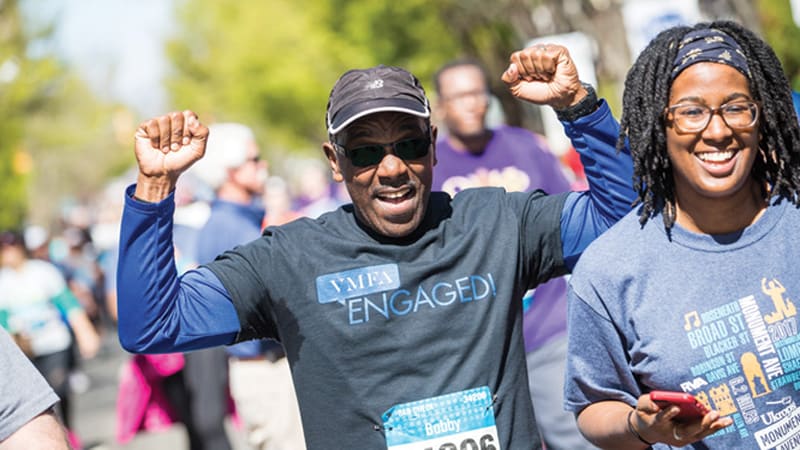The Best Healthcare Bargain for Longevity
Taking matters into your own hands – or feet

Many years ago, one of my favorite pearls of law school wisdom was this axiom: “The best remedy is sometimes self-help.” Forget courts, judges and lawyers – take care of it yourself. Well, that’s what the most current medical knowledge is now clearly telling us when it comes to the epidemic of chronic illnesses that the boomer generation is facing: cardiovascular, cancer, diabetes, orthopedic and even Alzheimer’s and depression. And the remedy is – get moving.
Let’s review the facts. Despite spending more on health care than any other country, our health outcomes rank much below many other countries. Our current medical delivery system is a complicated mess, with most of the focus being on acute-care fixes, and little on prevention. Primary-care doctors can’t spend much time with you, unless you’ve paid extra to upgrade to the concierge level. Insurers and the government reimburse for “procedures,” fixing what’s wrong, not preventing it in the first place.
So we ought to pay close attention to the knowledge now being reported that some simple, inexpensive and not very challenging forms of exercise can both extend our lives and improve the quality of our years.
THE SELF-HELP PRESCRIPTION
Here’s what we need to heed. For 15 years, the nationally regarded Cooper Institute in Dallas compiled data from over 55,000 men and women on whether running – slow or speedy – showed health differences. The study demonstrated a remarkable difference between runners and nonrunners, regardless of how fast they moved or how far: the overall risk of dying for movers went down 30 percent, and heart-related deaths declined 45 percent.
This year the news got even better. In a follow-up to the 2014 study, a new published study re-examined the Cooper data, added results from other recent related studies and reported even more striking benefits. If you move some, regardless of pace or distance, you can add three years to your life. The study found as little as five minutes of daily running led to better life spans. While running added the most benefit – an increase in life span of seven hours for each hour running – other exercises such as walking and biking provided a similar return on investment. That ROI, in the jargon of our business friends and financial advisers, is impressive.
But wait, as the late-night infomercials say, there’s more. The health benefits weren’t just for better cardiovascular health, which showed a risk reduction of 45 to 70 percent when compared with nonrunners. In addition, the report noted a 30 to 50 percent cancer death risk reduction, as well as an unquantified [at this time] protection from death due to neurological conditions, such as Alzheimer’s and Parkinson’s. It has long been known that the “runner’s high” endorphin effect provides a positive mental state in many joggers, and recent studies are, unsurprisingly, beginning to report that jogging and walking at even a moderate pace will reduce depression and work as effectively for some as conventional antidepressants. Moreover, just regular walking at a moderate pace lowered memory loss risk by up to 50 percent, slowed age-related declines in brain function and improved cognitive task performance.
Notably, the overall longevity benefits of 25 to 40 percent were found even after the scientists, in their syntax, controlled for such “confounding factors” as smoking, drinking, hypertension or obesity. Now, this isn’t a free pass for ignoring important lifestyle factors. Rather, it is compelling good evidence for the strength of the independent benefit that moving gives us if we just get up and move. It also says if you have issues with weight, blood pressure, blood sugar and so on and you get moving, you will live longer, despite those risk factors.
NO BONES ABOUT IT
How about the orthopedic nay-sayers who criticize any kind of jogging as problematic? Earlier this year, a small short-term study reported that jogging actually can strengthen the knee cartilage that cushions bones and protect against inflammation-related arthritis. As its lead author concluded, “Moderate amounts of running are not likely to harm healthy knees and probably offer protection.” The study adds to past studies showing runners are less likely to develop knee osteoarthritis than nonrunning people of the same age. If you want to hedge your bets while waiting for more data, don’t sit around: walk – it has no adverse impacts on the knees.
This year a study was published reporting people who either run or walk at a fairly fast pace have healthier spines than sedentary people. Those who moved had bigger spinal discs and more fluid – good things – than people who didn’t get up and exercise. The additional good news here was that the distance covered didn’t really affect the benefits found. And another study just out reported that regular walking and biking significantly reduce the risk of sciatica, one of the more prevalent low back pain issues as we age, and one for which there is rarely helpful surgery.
There’s also an increased understanding that the kind of stresses you apply to your bones when jogging actually strengthen your bones and make them more resilient to injury. A recent article citing sports medicine experts said this result was especially important for post-menopausal women, who typically experience greater diminished bone mass than men as they age. A bonus effect from jogging for many women is they also have fewer adverse effects from menopause.
Whatever you do, however slow or short, fast or long, has to be done with consistency. The next issue of BOOMER will look at getting started. In the meantime, get moving!
Alan Rudlin, recently retired, is a Richmond resident who’s evolved from a jogger to a slogger over his 45+ years of “running.” He attributes many of his best arguments as a former trial lawyer to ideas that came while jogging.
Always seek the advice of a qualified health care professional before undertaking a new fitness regimen.


